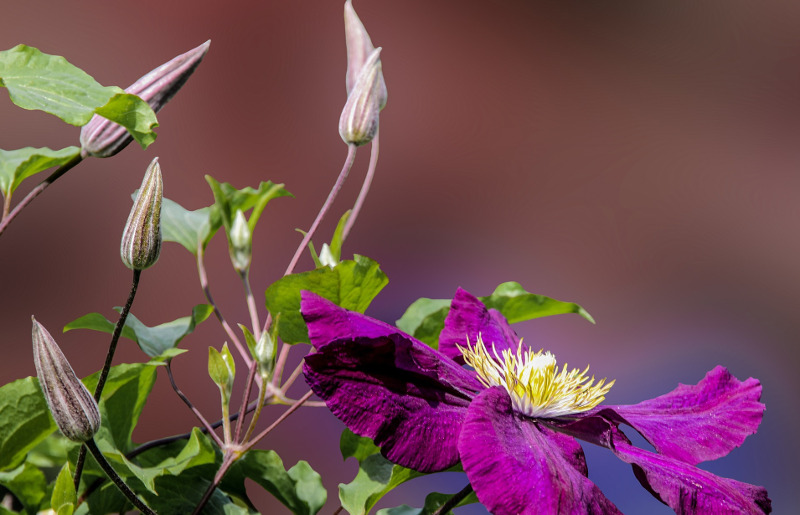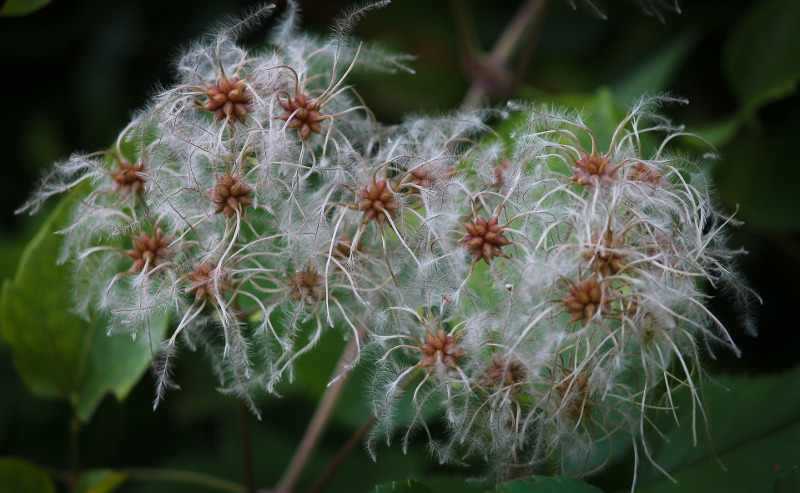Clematis are perennial vines with beautiful flowers. They are said to be hard to prune and that they are demanding plants to grow, but actually they have very simple needs.
Don’t be afraid to prune them. Even if you make a mistake, you won’t kill them by pruning at the wrong time. At worst, you may not have a year with many blooms on the plants as they recover from being cut back, but the plants will come back the next year and be just fine.

When to Prune Clematis
For many beginning and even experienced gardeners, the question of “when do I cut back my clematis” is often a confusing one, because the answer to when should you cut is – it depends! There are three general groups of clematis vines and each has their own best time to prune them. You must first know when your clematis vine blooms in order to know what pruning group it is in.
Group 1 are those that bloom in the early spring time. They bloom on old wood and form their flower buds for next year during the summer growing season. These generally do not need any pruning. Though, if you are going to cut them to control the size of the plant, trim right after the plant is finished blooming. If you do so at this time, you can do so ruthlessly and cut it back as much as you like.
Group 2 Clematis are those that bloom in early summer. These kinds have flowers on both old and new wood. This is the most common kind and they are large-flowered hybrids. The best time of the year to prune them is in the early spring before new growth begins. Make your cuts just above the healthiest-looking buds. Next, cut out any tangles and damaged wood.
Group 3 Clematis are those that bloom from mid-summer well into fall such as Clematis ‘Sweet Summer Love’. They bloom only on new wood and can be cut back hard in the late winter or early spring to within 6 inches of the ground. This is the best time and will rejuvenate your vine. It seems radical, but this is actually the best way to clear out all that old growth and start fresh each year.

How to Prune Clematis
Step 1 – First determine what group of clematis it is.
See “When to Prune Clematis” to figure out which of the three groups your vine is in and that will tell you what time of year is best to cut them back and how much to do.
Step 2 – Next clean and sharpen your pruners.
It is important to have sanitized and sharp cutting blades. You can use a sharpening stone or have your pruners professionally sharpened. To sanitize them, wipe the blades with a cotton ball dipped in rubbing alcohol. It is a good idea to wipe the blades between each plant and before moving on to a new one so you don’t transfer possible diseases from one to another.
Step 3 – Follow the vines down to the base of your clematis.
- If your vine is in Group 1, determine if anything needs cutting at all. If anything is dead, diseased, or damaged, cut that out. The rest can remain.
- If your vine is in Group 2, you will cut back each stem, to about 6-8 inches – to a point right above where it starts to branch. At that point where it branches, look for a pair of small bumps, those bumps are the growing buds and you to leave them on the plant. You can trim to just above those buds.
- If your vine is in Group 3, cut about a half-foot up from the ground and remove all the growth about it and discard it.

Clematis Pruning Tips
- No matter what kind of clematis you are growing, they should be cut back to about 6 inches from the ground during the first late winter or early spring after it has been planted. This will make the plant have a more full and healthy growth habit in future years.
- You can do a special second-year pruning to encourage your plant to be even fuller and produce many more blooms. This is not necessary, but if you do, the plant will have flowers all over and not just at the top third or so of its branches. To do the second year prune, just cut everything back to 5 inches high. No need to look for the growing buds.
- Clematis vines are very forgiving and are generally root-hardy. If you make a mistake, it may take a couple years to recover fully, but they should be fine after that.
- Knowing your clematis group type will guide the pruning schedule. That will tell you what time of year is best to cut it back and how much to cut.
 |
Author Kathy Jentz - Published 12-01-2020 |
